Your cart is currently empty!

Australian Nurses and Midwives: How to Meet CPD Requirements
(Estimated Reading Time: 9 minutes)
Australia continues to uphold a globally competitive healthcare system by consistently enhancing the skills and knowledge of its healthcare workforce. Thus, the Continuing Professional Development (CPD) requirements are essential for nurses, midwives, and all professionals across Australia.
CPD ensures Australia’s healthcare practitioners remain current with the latest field advancements. In addition, the Nursing and Midwifery Board of Australia (NMBA) mandates CPD requirements specifically for medical practitioners. So, let’s explore CPD in detail, its significance, and the process of completing the CPD requirements.
General CPD Requirements
CPD involves activities that improve and broaden your skills and knowledge. Moreover, CPD helps nurses and midwives deliver high-quality care. The only exceptions to this are those who are still students and those with non-practicing registration.
CPD ensures that healthcare professionals remain competent, encouraging lifelong learning and professional growth. Thus, the NMBA has set a minimum requirement/hours annually that nurses and midwives mandatorily follow. Here are the details:
1. Annual CPD Requirements
All nurses and midwives registered in Australia must complete a certain number of CPD hours each year as a requirement. Moreover, additional hours will be added if you have endorsement registrations and added practice in your registration.
a. Registered Nurses (RNs): 20 hours per year
b. Midwives: 20 hours per year
c. Enrolled Nurses (ENs): 20 hours per year
d. Registered Nurse and Midwife: 40 hours per year
i. 20 hours as a Registered Nurse
ii. 20 hours as a Registered Midwife
e. Midwife with scheduled medicines endorsement: 30 hours
i. 20 hours as a Registered Midwife
ii. Additional 10 hours for scheduled medicines endorsement – relating to the context of practice, prescribing and administration of medicines, diagnostics investigations, and consultation and referral.
f. Midwife Practitioner: 30 hours per year
i. 20 hours as a registered midwife
ii. Additional 10 hours for Midwife endorsement – relating to the context of practice, prescribing and administration of medicines, diagnostics investigations, and consultation and referral.
g. Registered nurse with scheduled medicines endorsement: 30 hours (Rural and remote)
i. 20 hours as a Registered Nurse
ii. Additional 10 hours for scheduled medicines endorsement – relating to obtaining, supplying, and administering scheduled medicines.
h. Nurse Practitioner: 30 hours per year
i. 20 hours for RN
ii. Additional 10 hours for nurse practitioner endorsement – relating to prescribing and administering medicines, diagnostics investigations, and consultation and referral.
i. RN and Midwife with scheduled medicines endorsement: 50 hours
i. 20 hours as a Registered Nurse or Enrolled Nurse
ii. 20 hours as a Midwife
iii. Additional 10 hours for scheduled medicines endorsement – relating to the context of practice, prescribing and administration of medicines, diagnostics investigations, and consultation and referral.
2. Types of CPD Activities
The selection of learning activities should encompass a diverse range to cater to various learning preferences and objectives. Hence, participants are strongly encouraged to integrate their CPD requirements with multimedia resources and employ a blend of instructional methodologies. These activities can include face-to-face interactions, simulations, interactive e-learning modules, and self-directed study. Examples of suitable activities include:
1. Pursuing postgraduate studies
2. Engaging in journal clubs
3. Undertaking in-service education
4. Participating in conferences, workshops, and seminars
5. Contributing to scholarly literature by authoring a book chapter
6. Publishing articles in peer-reviewed journals
These activities are designed to foster CPD requirements and enhance expertise in the field, ensuring a comprehensive approach to learning and growth.
3. CPD Portfolio with Reflection and Evaluation
A CPD portfolio is a recommended way to keep your records, and it’s best to keep your portfolio for five (5) years. The NMBA may audit your CPD records, so having a portfolio is helpful. If selected for an audit, you must provide evidence of your CPD requirements. Furthermore, non-compliance can lead to NMBA actions, including conditions on your practice or suspension of registration.
The NMBA provides a CPD Portfolio template you can download at their website. In addition, you can use the template to record your CPD activities and learning goals simultaneously. Below is a sample of the CPD Portfolio template.
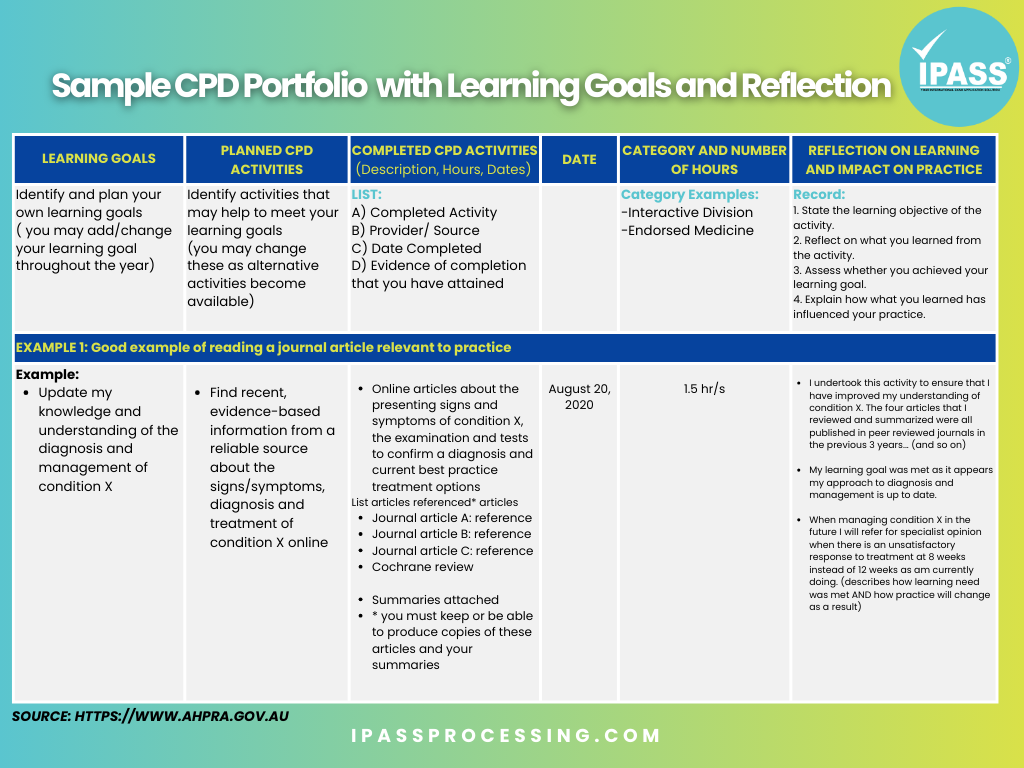
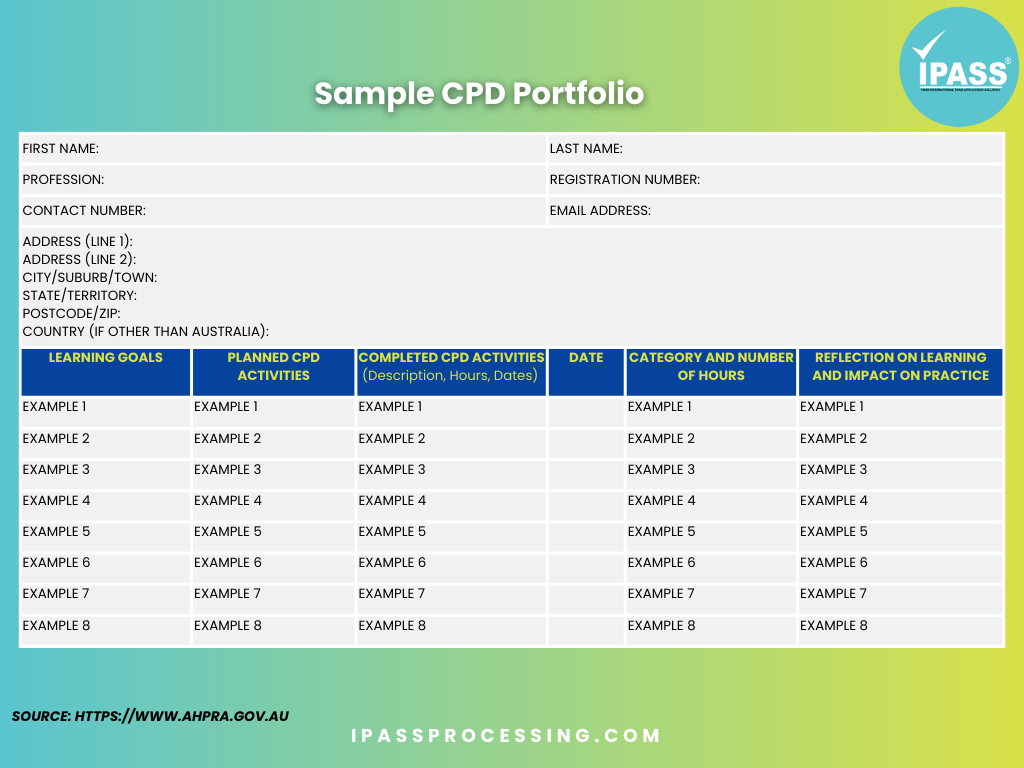
Keeping accurate records of CPD activities is essential. It would be best if you documented the following:
1. Dates of activities
2. Description of activities
3. Number of hours spent
4. How the activity relates to your practice
Reflecting on your CPD activities is also essential. Evaluate how the activities have improved your practice, and include these reflections in your documentation. Moreover, think about the learning outcomes and how you have applied them. The reflection or takeaway can also indicate that you have learned something from the CPD activity.
So, make your reflection short and straightforward, yet discuss the importance of the CPD activity to your practice. In addition, you must update your CPD records regularly—don’t wait until the end of the year. Staying organized makes it easier if you are audited.
Resources for CPD Activities
Many resources can help you meet your CPD requirements. Here are some options:
1. NMBA Resources
The NMBA provides guidelines and templates for CPD. These resources can help you understand the requirements. Thus, use the NMBA’s website for the latest information.
2. Professional Associations
Professional associations offer CPD opportunities. The Australian Nursing and Midwifery Federation (ANMF) and the Australian College of Nursing (ACN) are good examples. They offer courses, workshops, and other CPD activities.
3. Online Courses
Many websites offer online CPD courses. However, make sure that they are accredited and relevant to your practice. Additionally, online courses can be a flexible way to earn CPD hours.
4. Conferences and Workshops
Attending conferences and workshops can count towards CPD requirements. Moreover, these events offer learning and networking opportunities. Hence, look for events relevant to your field.
5. Informal Learning
Informal learning activities can also count towards CPD. These activities include reading professional journals and participating in study groups. So, make sure to document these activities.
Pro-rated CPD Requirements
The required CPD requirements for nurses and midwives will depend on your registration date. If you have registered part-way through a registration period, there will be a minimum required CPD hours. Here are the details:
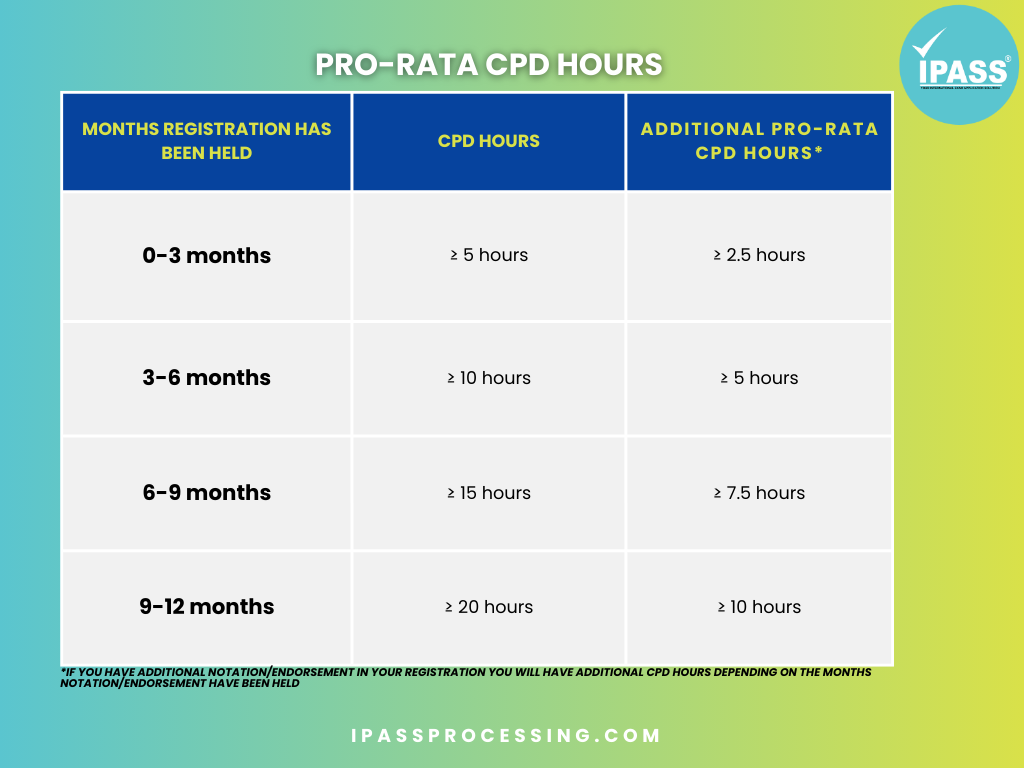
In case you have been endorsed or notated in the middle of a registration period, the same rule will apply. Pro rata CPD hours will still be applied to you per endorsement/notation. Moreover, those with dual registration (RN and Midwife, etc.) must complete the midwives’ CPD requirements and nurses. However, some CPD activities apply to both practices. Hence, planning and determining CPD activities that apply to both your registration is wise.
Exemption from CPD Requirement
There are circumstances in which you may not be able to acquire the required CPD hours within the timeframe given. The NMBA understands this, and you can apply for an exemption. However, exceptional circumstances can only be given if compelling evidence can be provided. To apply, you must send the request in writing to the AHPRA office in your state or territory.
In the letter, you must include all the evidence for further consideration. For example, you went out of the country, underwent marital leave, had a career break, experienced unemployment, etc. Here are some examples of exceptional circumstances that NMBA may consider for a CPD exemption:
1. Significant illness or injury: This could be a severe illness or injury that prevents the nurse or midwife from working and undertaking CPD activities.
2. Providing care or support to a family member: This could be a situation where the nurse needs to provide full-time care for a sick or injured family member. Thus making it difficult for them to complete the CPD requirements.
3. Deployment to a natural disaster zone: If a nurse is deployed to assist with relief efforts in a natural disaster zone. Then, they may be exempt from CPD requirements for that period.
It’s important to note that these are just examples, and the NMBA will consider each case on its merits. If you believe exceptional circumstances prevent you from completing CPD, you can apply for an exemption. However, note that you must provide evidence to support your request. It can include a letter from your doctor, documentation related to parental leave, deployment orders (for military service), etc.
Tips for Successful Continuing Professional Development
We hope we have provided all the information you need regarding the CPD requirements. Moreover, here are some more helpful tips we can give to assist you complete a successful CPD requirement.
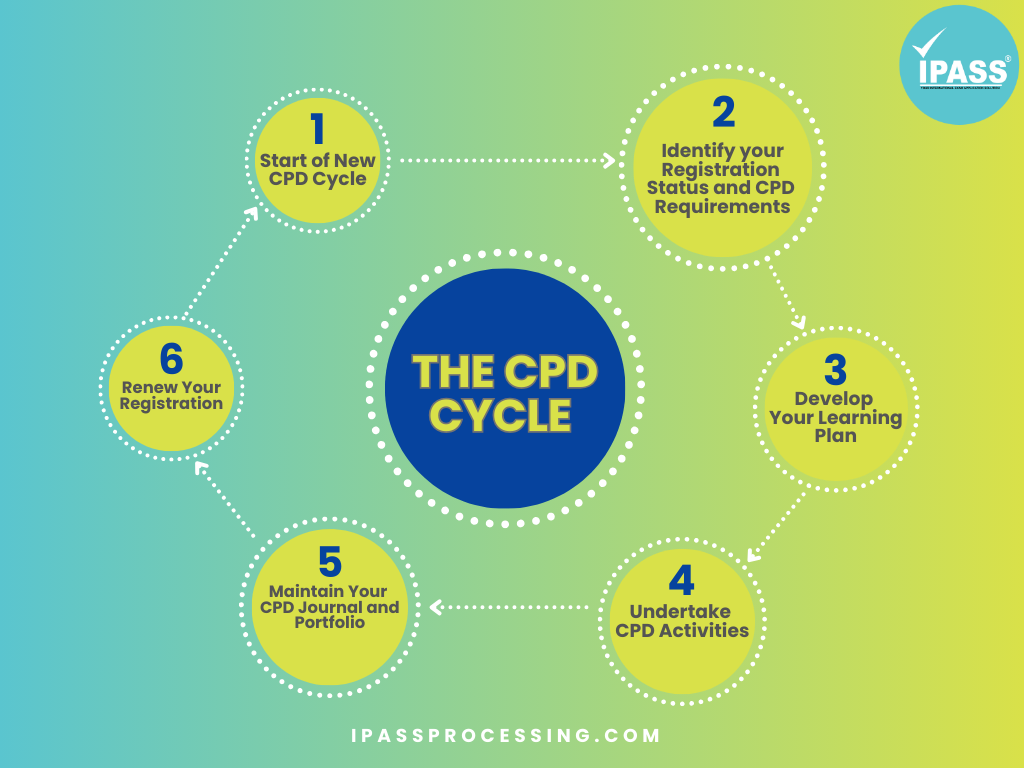
1. Plan Ahead
Plan your CPD activities at the beginning of the year to distribute your hours effectively. Also, avoid last-minute rushes to fulfill your CPD requirements.
2. Choose Relevant Activities
Select activities that directly align with your professional practice. This approach ensures maximum benefit from your CPD efforts. Thus, consider your career aspirations and learning objectives when making choices.
3. Balance Different Types of Learning
Diversify your CPD by engaging in both formal and informal learning activities. Attend workshops, stay updated with current research through journal readings, and take advantage of online courses. This variety enhances the richness of your CPD experience.
4. Reflect on Your Learning
Allocate time for reflection after each CPD activity. Evaluate how to utilize your newly acquired knowledge or skills in your daily practice. In addition, document these reflections systematically in your CPD portfolio.
5. Keep Your Portfolio Updated
Update your CPD portfolio regularly with comprehensive details and reflections on your learning journey. This practice ensures readiness in case of a CPD audit and supports ongoing professional development.
By following these simple tips, you can ensure that you can successfully complete the CPD requirement process.
Conclusion
CPD is a vital part of being a nurse or midwife in Australia. It helps maintain high standards of care and encourages lifelong learning. In addition, the NMBA sets clear requirements for CPD. By following these guidelines, you can stay compliant and grow professionally. So, use all available resources and plan your CPD activities carefully. Furthermore, keep thorough records and reflect on your learning. Doing so will ensure you meet the CPD requirements and improve your practice.
Remember, CPD requirements are not just a requirement. They are an opportunity to enhance your skills and provide better patient care. Thus, stay committed to your professional development and make the most of CPD opportunities.
Recommended Reads
- Pass the NCLEX with Confidence – Join IPASS NCLEX Review 18th Cycle
- NCLEX Pass Rates 2024: Key Insights You Need to Know
- May 2025 PNLE Results: Top Schools & Topnotchers
- Ace the May 2025 PNLE: Final Week Preparation Tips
- Nursing Job Opportunities in the Philippines for USRNs
Recommended Topics
- ASCPi (1)
- Australia (8)
- Canada (5)
- Exam Tips (28)
- General (120)
- IPASS Events (10)
- IPASS News (129)
- Middle East Nursing (17)
- NCLEX (65)
- New Zealand (3)
- NMBI Ireland (1)
- Online Review (13)
- PNLE Online Review (3)
- Tourist Visa (1)
- UKNMC (1)
- US Nursing (12)
- UWorld (1)
- VisaScreen (3)
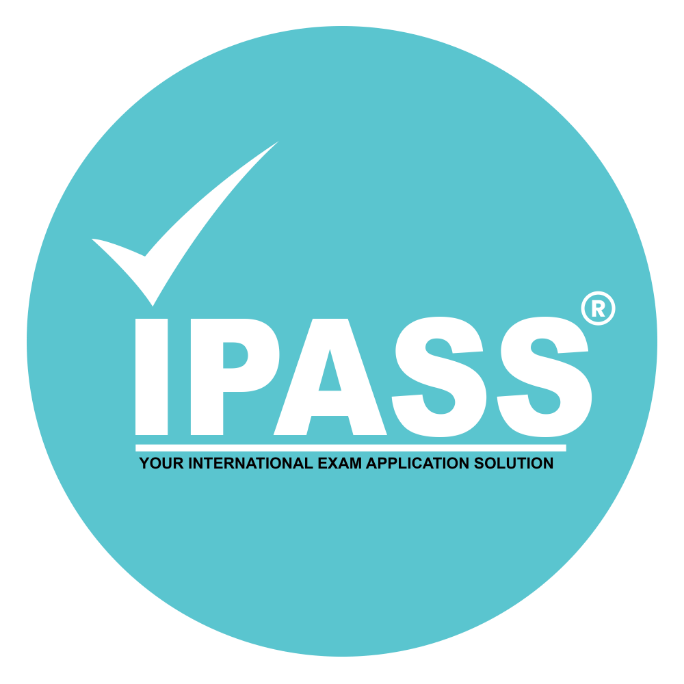







Leave a Reply